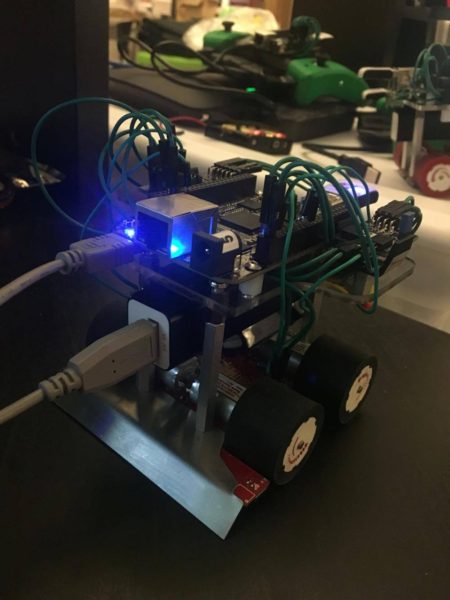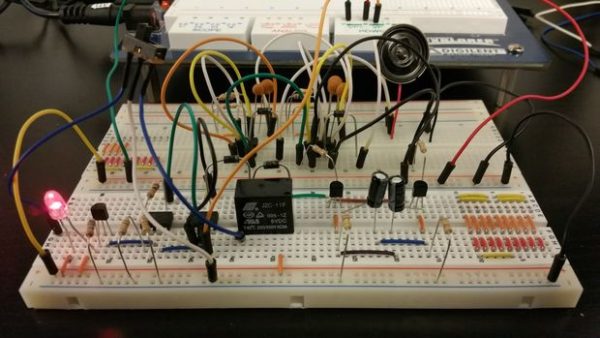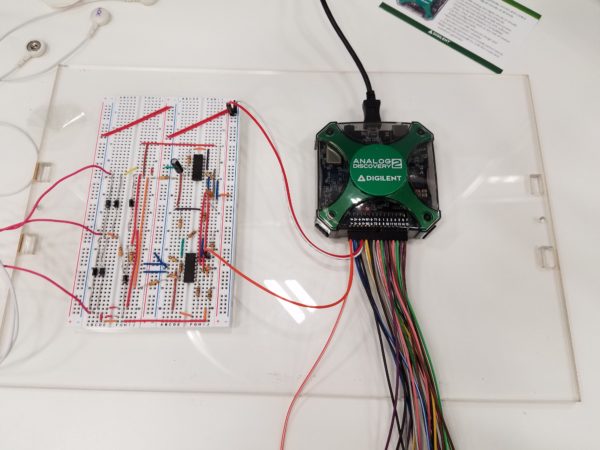“Are you sure the Pmod is wired properly?”
That’s the question my fellow LabVIEW intern asked me when we were racing to troubleshoot our sumo robots before NI week.
“Yes I am sure!”
That was my immediate response, which made it extra embarrassing when the problem ended up being stray Pmod wire the whole time. It was such a stupid mistake. And I was, of course, blaming everything from the board manufacturer to disturbance from the WiFi signal.

These types of situations are common when you spend a lot of time working with electronics. That’s why it is important to have a good strategy for approaching these problems when they occur. Everyone will have a slightly different process but in this post, I will give you a few tips to that will hopefully help you avoid some of my mistakes.
Stick to the Conventions
If something has been around for some time, then there is a reason why it has been there. So stick to color conventions while wiring up things (Red for power, Black/Brown for ground and Yellow/Blue for signals). This might take some effort but it’s totally worth the time you spent. It will also make it easy for other people to help you. Below you can see a picture of a circuit made by on of my coworkers Brandon Marcum. He doesn’t follow this convention perfectly but when you have worked with analog circuits as long as him you will get to the point where you can create your own standard.

No Guess Work!
If you plan on building a circuit it’s important that you spend some time planning first. At times when you are designing your own circuit, you may come across a situation to decide on the resistance or capacitance of a network. Now you may be inclined to choose some value higher than the required to be safe, but it’s never a good idea to guess the component values. If you aren’t already using a circuit diagram or schematic I would highly recommend drawing one before you start. Once you have a schematic you should be able to do some simple math to figure out exactly what components to use.
Divide and Conquer
There’s nothing worse than finishing a large and complicated circuit just to find out that it doesn’t work at all. When I build my circuit I try my best to build it in a way that allows me to test it as I go. The key to a successful debug lies in identifying the faulty region as soon as possible so to isolate blocks of circuits and test them separately. This will help you pinpoint the problem.

Use the Scope!
Sometime you’ll have to see what is actually going on down there as it is not always possible to analyze circuits from your mind. Most times, a DSO could save you a lot of time by telling us exactly what is happening in your circuit. Additionally, the Analog Discovery 2 acts as a great way to analyze circuits, especially with the Logic Analyzer in WaveForms 2015. If your still not sure which tool to use, check out a comparison guide regarding digital multimeters and the Analog Discovery 2 as debugging tools. If your circuit isn’t working and you have the AD2 in your pocket, there’s nothing to fear!

Thank you for reading my blog post, If you want to read more about tips and tricks for circuit debugging check out this link. If you are interested in learning more about the Analog Discovery 2, take a look at either the reference page or the Analog Discovery 2 Quick Start videos. Please comment below with any questions or comments you may have.











The beginner level circuit design technique is something i was waiting for so long and your article clears all my droughts related to the these. Its just a great article to read very informative and helpful.
The novice level circuit plan procedure is something I was sitting tight for such a long time and your article clears every one of my dry spells identified with the these. Its only an extraordinary article to peruse exceptionally useful and accommodating.
The Digilent Blog’s “Beginner Level Circuit Debugging Techniques” offers practical advice and strategies for those new to electronics, guiding readers through the essential steps of troubleshooting their circuit designs. This resource is particularly valuable for beginners seeking to understand and rectify common issues, thereby enhancing their skills in circuit analysis and debugging.